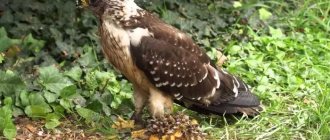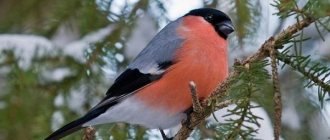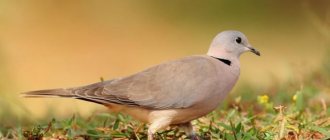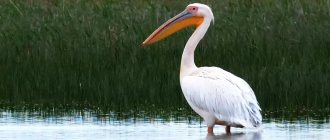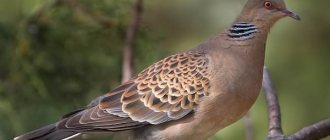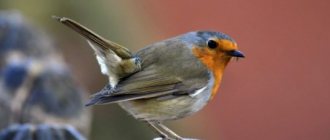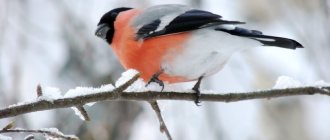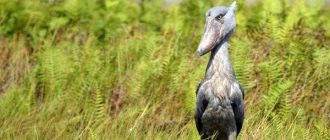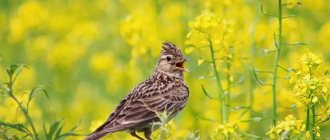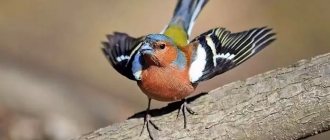A small, inconspicuous bird lives in our forests. However, despite its dull appearance, the bird is distinguished by its ability to sing wonderfully. This bird's name is Ficedula hypoleuca, which translated from Latin means pied flycatcher.
Scientists classify this bird as a member of the passerine order. The family that includes the pied flycatcher is called the pied flycatcher, genus pied flycatcher. Let's take a closer look at this wonderful bird, find out how it lives and what it eats. But first, a description of the appearance of the pied flycatcher.
Description of the bird
The flycatcher family includes two large genera - true and pied flycatchers, which in turn are rich in a variety of species and subspecies of these small songbirds.
Appearance
In size, flycatchers resemble an ordinary sparrow, but the color of the plumage varies greatly among different species. Representatives of true flycatchers are usually modestly colored, in gray, brown, olive tones interspersed with black and white, but among the variegated flycatchers there are individuals with rich yellow, blue, orange and red colors. The body length of the birds reaches 15 cm, the wingspan is 20-25 cm, the weight is from 10 to 17 g.
Features of the beak
— Advertising —
A wide beak with short elastic hairs at the base is characteristic of all types of flycatchers, thanks to which they can capture their main food - insects - in flight.
Flycatcher offspring
The nesting period lasts from late May to mid-June. The construction of the nest is done by the female. She makes a home out of dry grass, straw, old leaves, down and feathers. The flycatcher lays up to six eggs at a time. In size they are similar to passerines, their color is greenish with speckles.
Interestingly, regardless of the species, males and females differ in distinct sexual characteristics. The plumage of girls is faded and inconspicuous, while that of boys is bright and provocative.
After a couple of days, small chicks are born. Within two weeks, both the male and female bring them a large number of insects. The plumage of chicks is slightly different from adults. In appearance they are more brown than black.
After a month, the chicks slowly begin to leave the nest to explore their native land and get used to independent life.
What does it eat?
The very name of these birds speaks about the nature of their diet and food preferences. Flycatchers are excellent and passionate hunters of insects, including butterflies, flies, and dragonflies. The bird hunts in a very interesting way: it hides in the dense foliage of a tree and suddenly jumps up to grab an insect flying by in its tenacious beak and instantly return to ambush.
If the weather does not allow the flycatcher to fly, then the bird finds beetles, ants or spiders in the foliage of the trees.
Nest construction
It is interesting that the flycatcher (female) builds its nest only with natural materials. She carefully weaves it from moss, thin grass stems, wood fibers, and bird down. The outside of the bird sometimes covers it with lichen and thin twigs.
The inside of the tray is lined with moss, hair-like tendrils of climbing plants, and a small amount of horsehair is used. An open nest (not a hollow) is usually shaped like a small bowl. It does not exceed 50 mm in diameter and 45 mm in depth. It is difficult to detect the nest of a small flycatcher, since it is well camouflaged, and the birds are very careful and stay in the upper branches of trees.
Where does it live?
— Advertising —
Flycatchers like to live in open spaces; they prefer open forests with an abundance of cozy forest glades and clearings. They often become inhabitants of towns and villages and are not afraid of human proximity.
Their habitat is wide and includes all wooded areas of Europe and Asia.
Kinds
Gray flycatcher
The plumage of the bird is gray-brown or gray, according to its name. The belly is light with sparse dark feathers. The legs and beak are dark. The tail and wings are long. The young are distinguished by their brown color. The species lives in Europe and western Asia. Goes to Africa for the winter.
Broad-billed Flycatcher
The species, like the gray flycatcher, belongs to the genus true flycatchers, and is very similar in appearance. The bird's body length is 13-14 cm, weight is about 13 g. Females and males are colored the same, in olive-gray tones, with a whitish belly.
Habitat includes Eastern and Southern Siberia, Japan, and the Himalayas. The broad-billed flycatcher winters in the south of the Asian continent.
Little flycatcher
The species is distributed throughout Eurasia. This bird is small, with a body weight of about 11 g. The back of the male is brown-gray, the chest, head and neck are ash-gray with a red stripe on the throat, which is not found in young birds and females. There are white stripes on the sides of the tail and lower belly.
Pied Flycatcher
Adult males are brightly colored, black and white. The back is black with a gray loin, the head is black with a white spot on the forehead, the belly is white. The wings and tail are brownish-black with white decorations in the form of spots or stripes. Young animals and females have gray-brown plumage instead of black, and the belly is grayish-white. The body length is 16 cm, weight – up to 20 g. The bird lives in the forests of Europe and winters in Africa.
White-throated Flycatcher
The species is widespread in Europe and northern Asia. The bird's body length is 13 cm. The male's head is black with bright white spots on the throat and forehead. The back, top of the wings and tail are also black. All other parts of the body are white. The females are distinguished by brown plumage on the head without white spots, gray color of the wings and back. The birds' legs and beak are black and gray.
Taiga flycatcher or mugimaki flycatcher
An inhabitant of the taiga, which stands out among its relatives with its bright red chest. The back of males is black with a white stripe on the shoulders and behind the eyes. The belly is white, and the chest is rusty-red. The plumage of females and young animals is predominantly gray-brown, the breast is yellowish, lighter than that of males.
Chicks: plumage
The first plumage of the chicks is brownish-brown on top with light buffy spots on the feathers. The craw, throat and upper part of the breast are pale buff with a scaly brown pattern. Its intensity decreases in the upper part of the abdomen. On its lower part the drawing is completely absent.
The lower tail coverts are white. The first post-nesting (winter) plumage of young birds is very similar to the color of an adult female. However, on the upper and primary coverts the edges are less pronounced. The change of nesting plumage in young birds from early broods begins already in mid-June. This partial molt covers almost all the small feathers, excluding the outer upper coverts and secondaries.
In offspring from later broods, the first moult, as a rule, ends in late August-early September. During wintering, only rare first-year birds have individual red feathers on their throats. Adults molt twice a year: completely during the pre-nuptial period at wintering sites and during the post-nuptial period at nesting sites.
Keeping at home
Unfortunately, small and agile flycatchers do not get along very well in cages. But since these birds love to live close to people, they can be attracted to the countryside if you build a titmouse house for the flycatchers. A small structure made of boards measuring 10 by 10 by 20 cm is hung on any tree in the garden, and soon it can be populated by pied flycatchers. The gray flycatcher itself willingly nests on ledges and in the corners of houses.
How and where does he live?
The gray flycatcher lives throughout the Eurasian continent. It can also be found in the forests of North Africa, India, Iran and the Middle East, located on the slopes of mountains. The flycatcher, especially the pied flycatcher, is a migratory bird that leaves its native land in the winter, flying to the tropics. Mainly to Africa.
The bird settles in forests and on uneven landscapes. Usually these are edges, forests, forest belts, roadsides, open forests turning into steppes, and so on. The males arrive first and choose a nesting site alone, completely unnoticed.
Flycatchers need a lot of space to forage for food, so home ranges are limited to a few options. For this reason, in some areas you can find many nests of these birds.
Interesting Facts
- Flycatchers deftly and quickly catch their food, insects, right on the fly, and when their beak slams shut, a loud click is heard.
- Flycatchers eat a lot of harmful insects and thereby benefit humans. So, while feeding its offspring, the flycatcher brings approximately one and a half million insects (about 1.5 kg) to the chicks.
- To feed six chicks, the flycatcher flies for food approximately 500 times per day.
- During the nesting period, a male pied flycatcher can create several pairs with different females. But he always takes care of everyone who is in his “harem”.
Lifestyle and habitat
Most often, flycatchers can be found in thickets of bushes, in small forests; they also prefer to populate forest areas, choosing open areas: clearings, clearings. Those who want to watch them in the forest have the opportunity to witness the following picture.
These birds are located on a branch, occupying a vertical position, from this position vigilantly observing whether any insect will fly past. At the same time, the wings of the hunters shake and flutter, and they themselves are ready to fly at any moment, and when they see a suitable victim, they take off to overtake the desired prey in the air.
The main threat to these small creatures is from large feathered predators. These birds often live in close proximity to artificial structures and human habitation.
Therefore, often found in garden plots and small forests near fields, they turn out to be a great success for owners of homestead territories, destroying a huge number of harmful caterpillars, larvae and other small pests, and especially during the period of raising chicks.

